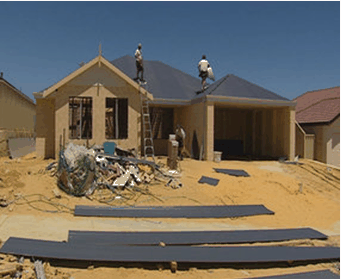
Robert Gottliebsen over at locked BS has posted an article today trumpeting that Australian “dwelling costs are about to be slashed” if the Federal Government implements reforms to the construction industry aimed at lowering union power and raising productivity:
If Tony Abbott and Eric Abetz can enact their building and construction legislation and builders can then implement efficient construction procedures, then the costs of a five-storey apartment block will fall by between 20 and 30 per cent and a high rise apartment tower by at least 10 per cent.
These are not my estimates, but were submitted to the ADC Australian Infrastructure Summit by Tony Boyd, the general manager of residential operations at building giant Australand…
…if the costs are reduced, we will see a big rise in the number of five-storey apartments because buildings of this size are able to adapt home-building techniques and construction methods..
Certainly, any reforms aimed at improving efficiency in the construction industry, and in turn lowering dwelling costs, is welcome and should be supported.
That said, far bigger gains could be achieved by fixing-up Australia’s dysfunctional land/housing supply system, for example by: removing artificial barriers to land supply, such as urban growth boundaries and restrictive zoning ordinances; simplifying and speeding-up planning processes; and replacing the “first-user-pays-all” approach to housing-related infrastructure provision with a “pay-as-you-use” system, which was commonplace in Australia pre-1990 (and worked well), and is still commonplace in well functioning housing markets like Houston.
The plethora of supply-side barriers to land supply and development have forced-up land costs by so much that free-standing homes cannot be supplied on an affordable basis, with the land component cost of apartments also rising in the process, reducing their affordability as well (but obviously by a smaller amount).
Last week’s release of land price data from RP Data illustrated this point, showing the median price of vacant land rising by nearly 500% over the past 20 years at the same time as lot sizes have shrunk (see below charts).
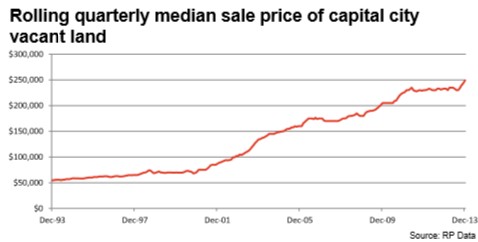
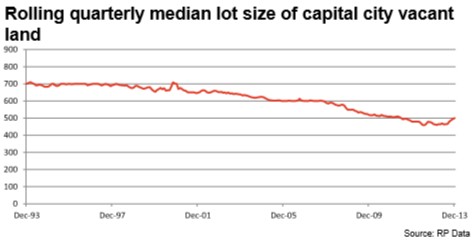
In fact, the median vacant land price was $249,000 across Australia’s capital cities in the year to August 2013. When you add in build costs of $150,000 to $200,000 for a starter home, it is little wonder that new housing has become so unaffordable, with obvious flow-on affects to the number of homes constructed (see next chart).
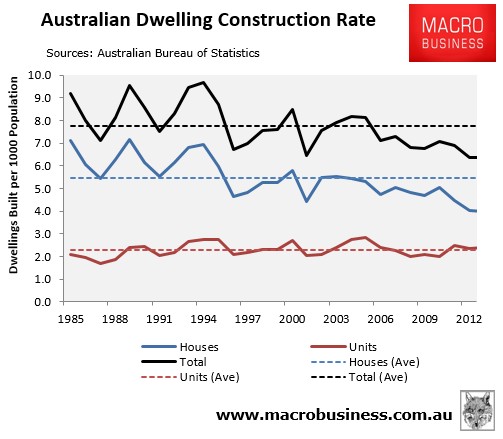
Further, according to the ABS, the cost of building new project homes (i.e. the cost of constructing the physical dwelling, excluding land costs) has been lacklustre when compared against the growth of house prices (which includes land costs), suggesting that the bulk of the cost escalation of new homes has been in lot prices, not dwelling construction costs (see next chart).
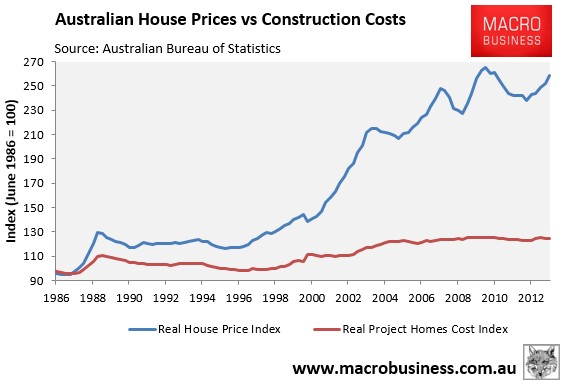
Rather than concentrating its efforts on busting the construction unions, the Federal Government should focus on the key cause of Australia’s escalating housing costs and dwelling construction malaise: policies that choke the supply of urban land and force-up its development cost.

